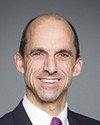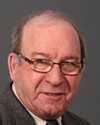So he talked about the need for providing “predictable long-term funding for post-secondary education” to “train our future researchers, scientists and innovators”. He also noted the severe shortage of skilled labour, the need for better cooperation between governments, and the need to eliminate barriers to higher education. These remarks about the importance of post-secondary education for Canada's future are equally important for the future of first nations, Métis, and Inuit peoples, if not more so.
Although the task is certainly daunting—and it is daunting—to address this, we must do what we can do in our time, in our generation. It can be this committee's heritage and its niche in history to put this into motion.
I can tell you from my experience as a student on reserve from grade one through high school, as a parent of a student in the same system, as the elected chief of the same community, as a passionate advocate of change for our situation in Canada, and now as president and CEO at the foundation, that conversion of potential to success to achievement won't just happen. It requires commitment, hard work, and a spirit that just won't give up. It also requires that we work together, and I'm hoping the committee sees the foundation I represent as a powerful ingredient in realizing the changes you would like to see.
The bold mandate that we have is to encourage, empower, inspire, and provide assistance so that first nations, Métis, and Inuit youths can convert their tremendous potential, their aspirations, and their dreams into solid achievement and brighter futures. We make it possible for them to contribute their gifts to their communities, to Canada, and to the world.
What is our core focus? Providing scholarships for our youths so that they can continue their education. We provide scholarships in a variety of fields: post-secondary education, health careers, fine arts, and also for cultural projects. We bring together public-sector—that is to say, government—and private-sector resources, and we carefully invest those resources to achieve a maximum of tangible and intangible results.
The foundation is a registered national charity, and the only one in Canada that provides educational support for first nations, Métis, and Inuit youths. We receive money from corporate donors, from first nations and our organizations, and from federal and provincial governments, and we often use resources from one sector to leverage funds from the other sector. We also proudly administer more than $14 million in endowments and trusts, for which our youths are the beneficiaries. Outside the federal government, we're the largest supporter of education for first nations, Métis, and Inuit youths.
Since 1988, the foundation has awarded $23.5 million in grants. To give you a sense of the numbers that we work with, I'm just going to take last year, 2005-06. We received 1,129 applications and made awards to 83% of the applicants—that is to say, to 934 recipients. Of these recipients, 53% were in post-secondary education, such as social science, education, business, law, science, technical studies, and engineering; 29% per cent were in health career fields; 18% were in fine arts or cultural projects. Of those, 35 engineers received assistance, 39 lawyers, 87 in science, 19 in technical studies, and I could go on. That's the good side.
Last year more than $2.8 million were awarded, up from $1.9 million the previous year. That's great news. There's a downside, however, and here it is. The support requested was over $8.6 million. We could only meet 32.5% of the amount requested. As well, despite increased education costs over nearly two decades, we are awarding now less per person than we were then.
Because we feel the need to stretch out what we have to assist more students, we take into account in awarding funds to students four criteria. The awards are done by jury. We look at demonstrated financial need and their own contribution to education costs and those of their first nation, if that's available to them. We look at their evidence of their involvement in and contribution to aboriginal community. We look at their evidence of suitability and commitment to their field of study, including requiring letters of reference, and we look at their demonstrated academic performance and merit in awarding these scholarships.
It goes without saying, but I will say so, that if we had had more money, we would have gone after even more applicants, would have responded to the applicants we got, and would have been able to provide basically more assistance to the students. We've monitored and tracked our students and asked them what their barriers are to post-secondary education. And they've told us, frankly, financial assistance.
I believe the foundation is much more than another competitor for the federal dollar. We've demonstrated that we improve the return on investment in education of first nations, Métis, and Inuit youth. We get results for the money. We nurture, support, encourage, and do all the things that investors do to realize return on their investments. We're able to use federal money as leverage to bring in more from the private sector, as I've mentioned, and to mix that with provincial investment and even individuals who support the foundation. We're also fully accountable. We demonstrate outcomes, concrete results for the money spent. I've mentioned what we awarded to 934 recipients last year. By the end of this year, the foundation will have given to more than 6,000 recipients over our life. Since 1999, 30% of our students have been in their final year of study each year, so that tells you they're graduating. We are now tracking even more closely, and I'm happy to speak in the question-and-answer session on our evaluation efforts and what we know and what we don't know.
We also provide transparency, financially. I invite you to have a look at our website--www.naaf.com. You will see our annual reports, our audited statements, and so on. We could do a lot more, with great benefit, if we had more resources.
Why should Canada be interested in providing more resources? On the one hand, Canada's economy is facing frightening labour shortages in almost every field, and we know that. We know that Canada is relying on immigration to keep the economy going, to provide services to an aging population. On the other hand, we know first nations, Métis, and Inuit people nationally are Canada's fastest-growing sector of the population, facing themselves frightening unemployment, under-employment, poverty, and unrealized productivity and potential.
There are two implications from this pair of circumstances. One is that each set of problems provides a solution to the other problem. Instead of two problems, I believe we have two solutions. The other implication is that if Canada relies on immigration to solve its labour problems, without dealing with the employment needs of its fastest-growing demographic sector, and if Canada leaves first nations, Métis, and Inuit youth on the sidelines for another generation, while it recruits internationally for workers, that's a recipe for both tragedy and trouble.
Part of the answer is the foundation. And I'm asking that this committee recommend that the government use the foundation's capabilities to convert problems into solutions. We've been very successful, as I've mentioned, in bringing together public and private sectors to leverage opportunity, to provide for our young people.
But the foundation does even more than that, and takes other lateral approaches in achieving results. We're changing images. We're changing minds. We're demolishing the negative image that currently exists, and the stereotypes, and creating new ways of seeing ourselves and others, showing what happens when our intellectual and creative potential has the opportunity to develop.
We do the annual achievement awards, for which we are well known, televised nationally on Global and APTN. March 16, 2007, Edmonton: please mark your calendars.
That gala provides a double benefit. Not only do Canadians get an education about what first nations, Métis, and Inuit youth--all our people--have to offer, but our people see positive role models. We're inspired, and we believe we have a future to grasp. We hold up our scientists, our healers, our environmentalists, and our peacemakers to show what we can contribute to the world in our own way and within our own identities. In seeking this individual achievement, we also seek it in the name of collective affirmation as indigenous peoples.
We focus a lot on post-secondary education, which is what you are looking at, but let me tell you, we are also working hard at especially the high school level. Too many of our young people are not completing high school. We do so with career fairs. The next one is in Yellowknife on November 25, and then in Halifax on February 1. We bring together young people with role models to motivate, educate, inspire, and help them believe they have a future to grasp.
We also take into the classrooms role models and modules that will show our young people the smorgasbord, the opportunities they have. We have wonderful modules in justice and in health, and in careers in the railway. More modules are in the making, produced in partnership with Canadian corporations and the public sector.
Then there is Rivers to Success. I don't have time to tell you about that program today, although I would love to. We're going to pilot it. We're shaping the pilot for Nunavut. Rivers is about reclaiming kids who've dropped out of high school, bringing them back into the fold, preparing them for trades, for post-secondary education, for university--for whatever their dream is.
Again, it's collaboration that we work on at the foundation. We're not reinventing programs. We're not providing another layer of services. We are maximizing what's there and putting it to the use of our young people.
We work with all those who are willing to help, those who are opting to take charge of our lives, to take ownership of our well-being and our future, and to make ourselves accountable to our children and to their future. That's what I'm doing at the foundation at this point in my life.
We understand that problems won't be dealt with, nor potential liberated, if we just throw enough money at it. We get that. But there is no doubt that we must have our resources to fulfill our mandate.
We know that we are only one instrument in a multi-faceted circumstance, but I tell you, we are a promising one. We are operating at a critical juncture in our history. If our students struggle through their childhood to get to the point where they can go on to advanced training, advanced education, and then find that the resources aren't there for them to move on, the tragedy is so painful we simply cannot allow it to happen. In Canada today, no first nation, Métis, or Inuit young person should be prevented from going on to post-secondary training or education because of lack of financial resources.
I wish the committee strength, health, clarity of vision, and patience in taking leadership on behalf of Canada to ensure that the challenge is met squarely and thoroughly.
We ask the committee to recommend to Parliament that the foundation be used as a means of assuring that every first nation, Inuit, and Métis student accepted for post-secondary studies has the means to realize that dream.
I'm pleased to answer questions, and to be even more concrete in my recommendations. Mr. Chair, thank you for your attention. I look forward to the dialogue with members.






